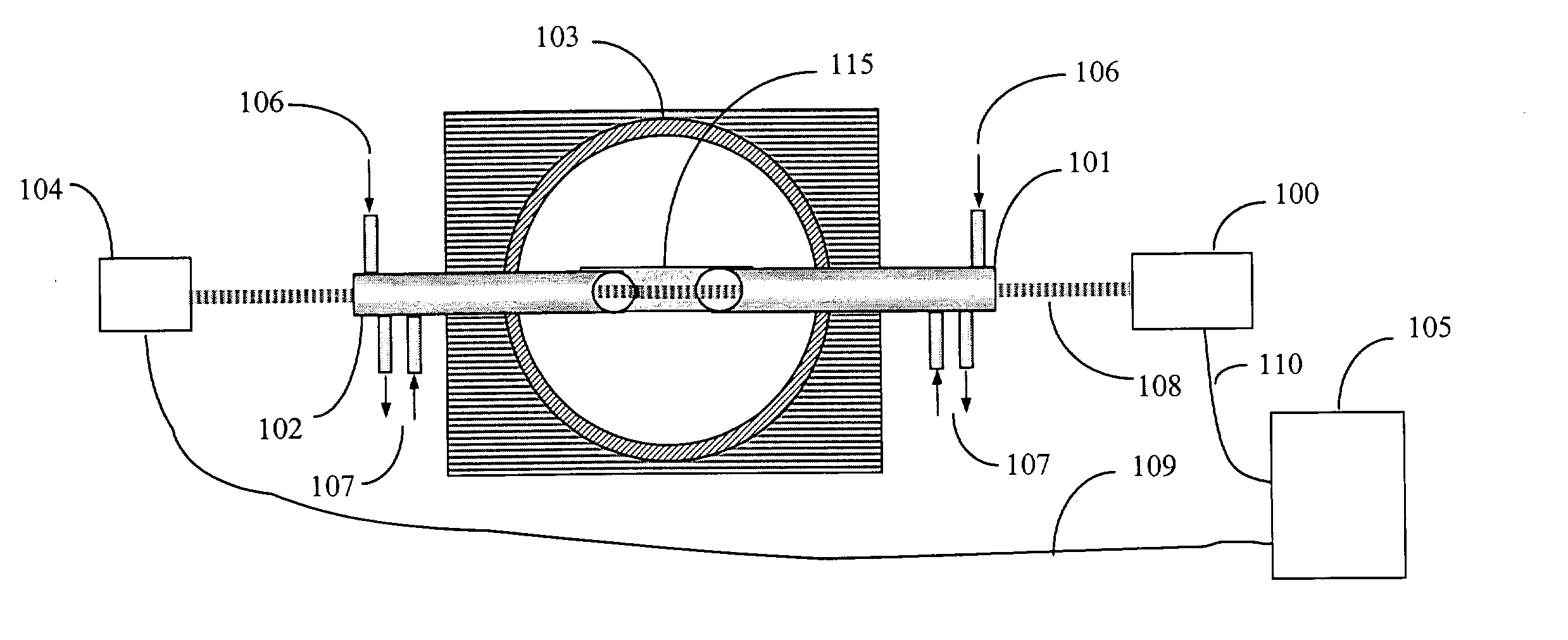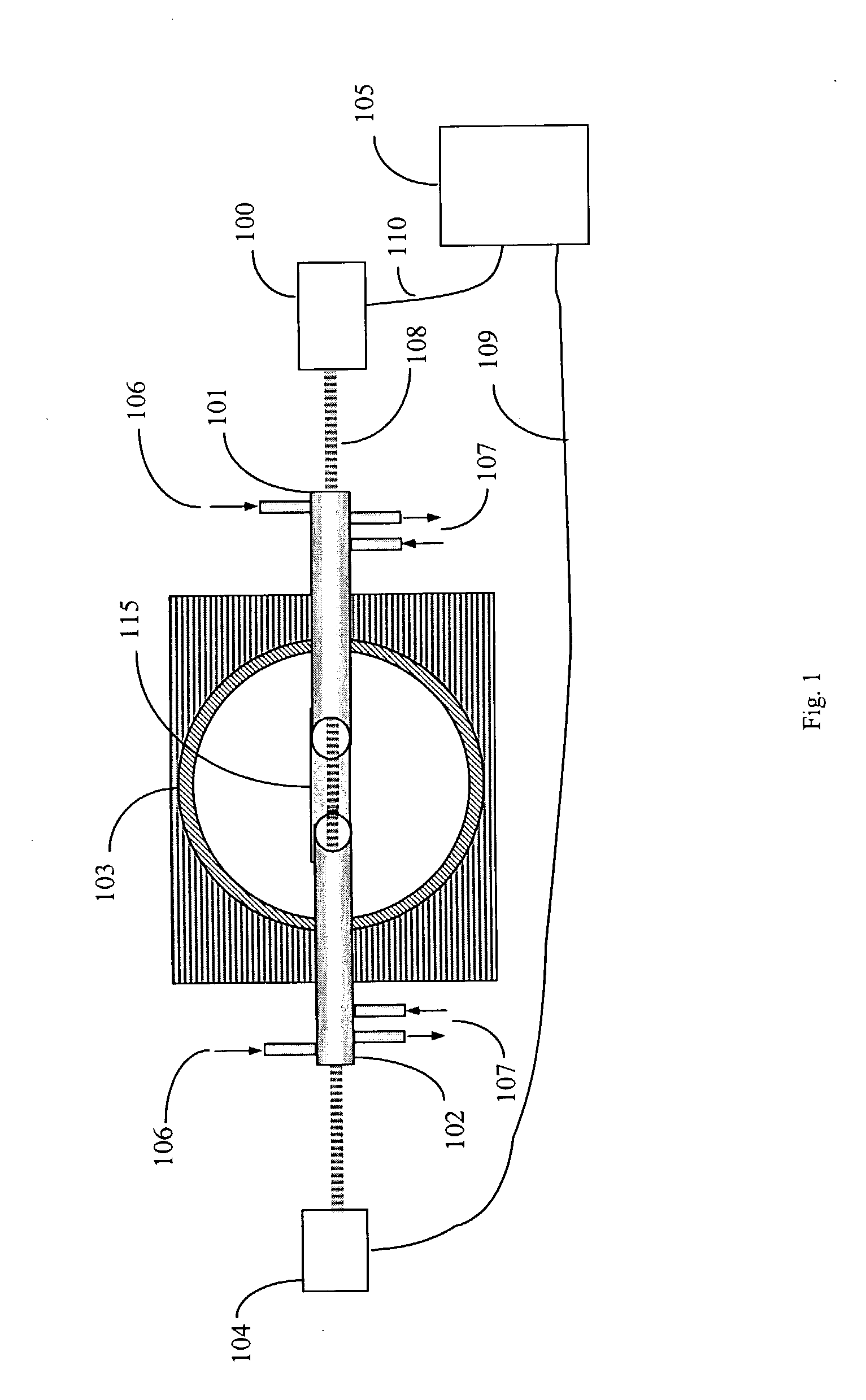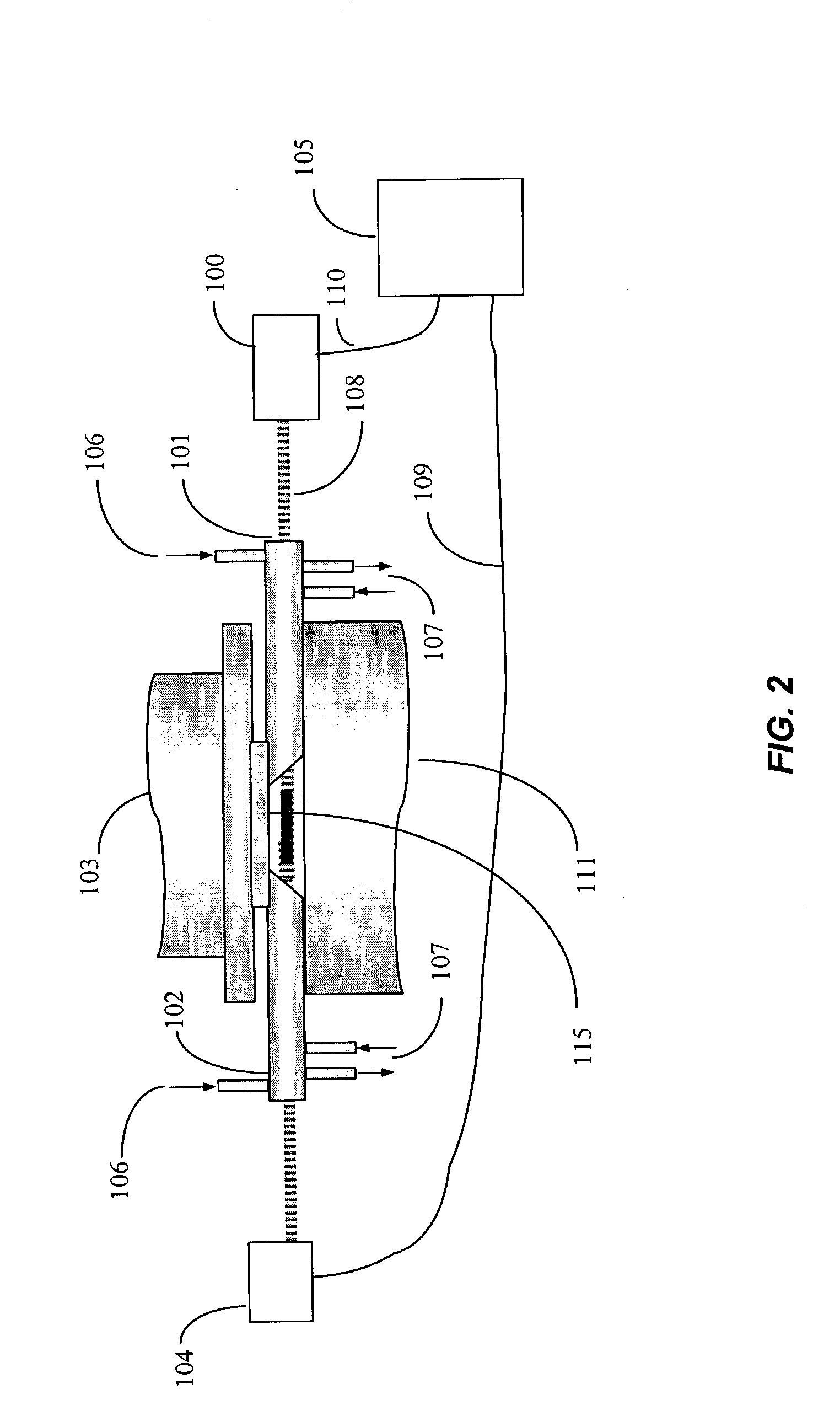Method for enhanced gas monitoring in high particle density flow streams
- Summary
- Abstract
- Description
- Claims
- Application Information
AI Technical Summary
Benefits of technology
Problems solved by technology
Method used
Image
Examples
Embodiment Construction
[0045] A method for conducting laser absorption measurements in high temperature process streams having high levels of particulate matter is disclosed. An impinger is positioned substantially parallel to a laser beam propagation path and at upstream position relative to the laser beam. Beam shielding pipes shield the beam from the surrounding environment. Measurement is conducted only in the gap between the two shielding pipes where the beam propagates through the process gas. The impinger facilitates reduced particle presence in the measurement beam, resulting in improved SNR (signal-to-noise) and improved sensitivity and dynamic range of the measurement. In a preferred embodiment, the method is adapted for use in an electric arc furnace (EAF).
[0046] To address reduce the effects of pathlength, particulate matter, and mechanical vibration from an industrial process exhaust stream, such as an EAF, a set of water-cooled pipes can be used to act as a shielding around the laser beam. A...
PUM
 Login to View More
Login to View More Abstract
Description
Claims
Application Information
 Login to View More
Login to View More - R&D
- Intellectual Property
- Life Sciences
- Materials
- Tech Scout
- Unparalleled Data Quality
- Higher Quality Content
- 60% Fewer Hallucinations
Browse by: Latest US Patents, China's latest patents, Technical Efficacy Thesaurus, Application Domain, Technology Topic, Popular Technical Reports.
© 2025 PatSnap. All rights reserved.Legal|Privacy policy|Modern Slavery Act Transparency Statement|Sitemap|About US| Contact US: help@patsnap.com



